
Бесплатный фрагмент - The Second World War
Day after day
Formation of the Third Reich
The appearance of the Third Reich (empire), which he became for 13 years and 13 days, as some historians believe, is the merit of the only person — Adolf Hitler (Hydler). The surname is identical to the meaning “forester, caretaker”. The only half-sister, Paula, the artist, lived until 1960, Angel’s half sister (by father), a housewife until 1949, her son Leo Hitler, was captured during the Battle of Stalingrad and was offered for exchange for his son Stalin, Yakov. Brother Edmund dies at a minor age.
In 1908, Hitler failed to take exams at the Vienna Academy of Arts, but since 1909, selling his paintings is beginning to bring a solid income. A.G. studies English and French in the amount sufficient to view the films of these countries in the original, is actively interested in arming the armies of the world and politics. He does not want to serve in the Austrian army “for the Czechs and Hungarians”, but in 1914, with the beginning of the Great War, he makes an application with a request to serve in the Bavarian (German) army. In 1918, Hitler was poisoned by the gas of a chemical shell exploding nearby the English. Half lost sight, he leads the blind comrades from the firing zone. It was at this time, according to his testimony, along with the news of the surrender of Germany, that he found a revelation about the revival of the Reich and miraculously healed. According to mythology, possibly having real roots, Hitler (1) receives a suggestion from a doctor, a powerful hypnotist, that he is the Messiah of the German people, and, therefore, must see through. Or, (2) Concludes an agreement with a representative of the dark forces that he will be given power for 13 years and 13 days (January 30, 1933 — April 30, 1945) for the rise of the German nation.
In November 1923, the rate of the German mark is 4.2 trillion for the American dollar. In 1924, parallel to it, the unofficial monetary unit — the so-called. rental mark secured by a pledge of immovable property. The rate to the ordinary mark is one to one trillion. A few months later, a legitimate Reichsmark (RM) appears, equal to it at face value, and both these currencies remain in circulation in order not to undermine public confidence. The cost of one RM — 2.5 grams of pure silver, which at the current rate is about 150 rubles. The appearance of these denominations suspends hyperinflation (5000%, the issuance of wages — twice a day, people are starving).
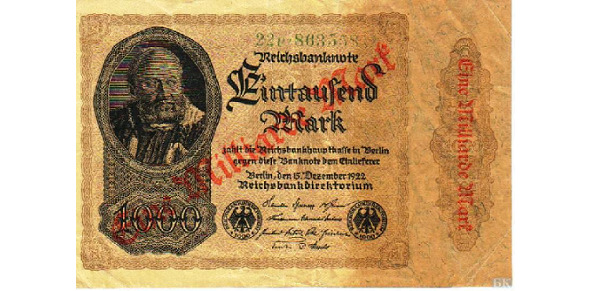
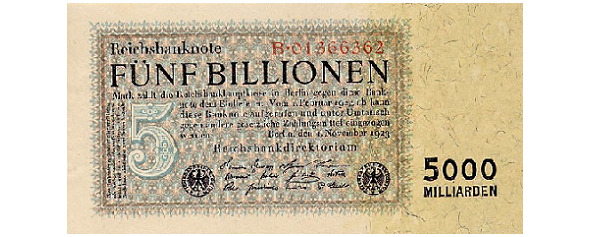
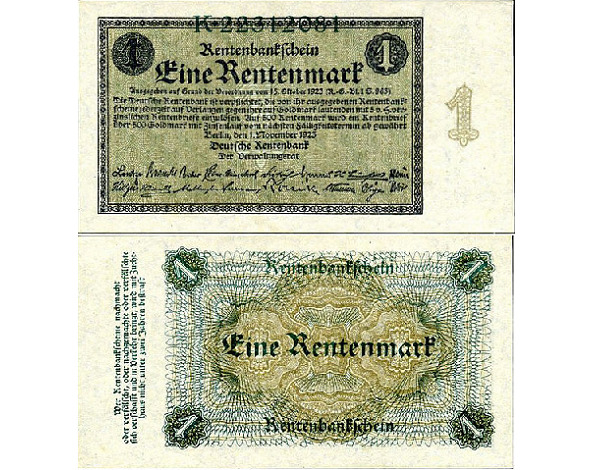
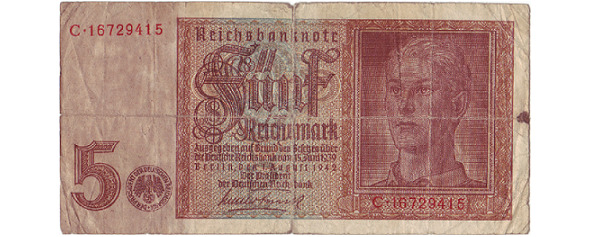
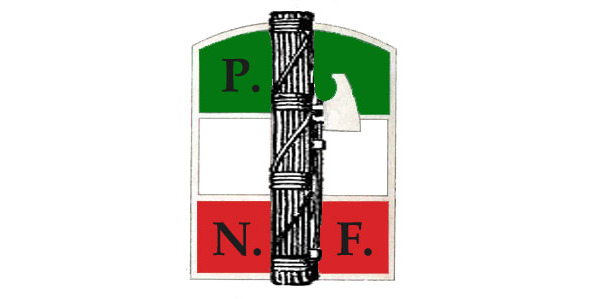
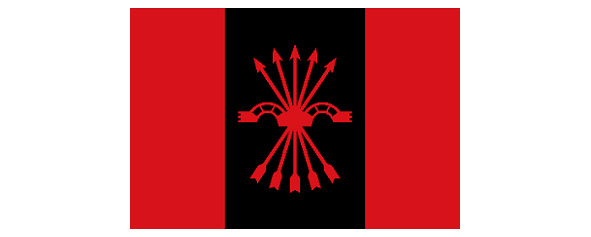


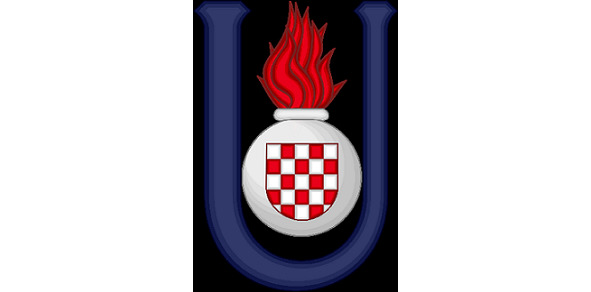
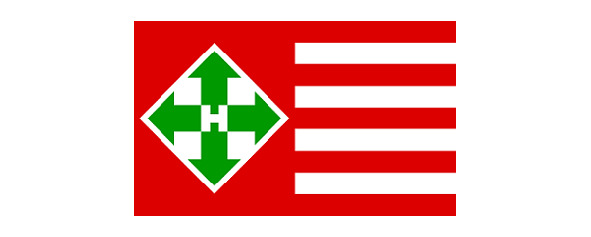
1. Billion of German marks in 1923. Till this time, Germany was called the Weimar Republic. Somehow it turned out that the division of the country could be contained, providing hyperinflation (the Rhineland was preparing to secede). Prices doubled every three days, in circulation was the so-called paper stamp (Papiermark). A beer mug cost four billion. In 1924, inflation was stopped. By the mid-twenties, the republic had achieved certain economic and political successes, but since 1929 a new, though not so strong, recession had followed. In the end, the Germans decided that the way out of the situation was in the new leaders and the Third Reich.
2. Five trillion “paper” brands in 1923.
3. Rental stamp. Provided with industrial potential, real estate, very popular. The rate is one to a trillion of “pipermaroks”.
4. Completely solid in design and execution of the Reichsmark of 1942 issue. A severe aesthetics of the new state order is visible. The salary of a German lieutenant (Obersturmfuhrer) is 220 marks a month. The purchasing power of the brand in the main set of products and services is about the same as that of the modern 7.5 dollars. The course towards the American currency, strangely enough, remained stable, until 1945.
5. The emblem of the Italian (primordial) fascism is a bundle of fascias (Latin fasces- rods), birch or elm rods, rods tied with a red ribbon, with a hatchet in them. This symbolism in Russia is not prohibited, it is used by such state entities as the Federal Penitentiary Service and the Federal Bailiff Service.
6. Emblem of the Spanish fascists, otherwise — of the Franco, Falangist, the party Falange Española. Arrows and yokes are symbols of the unifiers of Spain, the Catholic monarchs Isabella of the First Castilian and Ferdinand of the Second of Aragon. This form of fascism exists even after the end of World War II, until 1975 — the time of the natural death of dictator Franco Franco.
7. Lattice — a symbol of suffering for freedom, the emblem of the nationalist “Iron Guard” of Romania.
8. Symbol of the Polish Phalanx. The Poles are ardent nationalists, they do not recognize kinship with the Slavs, they are looking for their heroic forerunners in the semi-mythical tribe of the Sarmatians or even the Germanic tribes. Be that as it may, at the beginning of the Second World War, one nationalism almost completely destroys another, and this circumstance undoubtedly helps the Allies to win.
9. The symbol of the Croatian “Ustashi” (Horst “Ustaše” — “TheInsurrection”). The main idea of those who consider themselves descended is a mono-national state, anti-Semitism, serbophobia, nationalism, territorial claims to Serbia. Under the Germans, the Ustash, along with some Bosnian Muslims, form the Waffen SS corps, numbering about 113,000, physically destroying 400,000 Serbs, Jews and Gypsies.
The postwar policy of Yugoslav leader Josip Broz Tito — “Forgetting everything bad” only leads to the fact that in the early 1990s, non-repentant Croatian nationalists go on relapse, and unleash a bloody Civil War.
10. Flag of the National Socialist Party of Hungary “Crossed arrows”. In fact, the “Crossed Arrows” and its sole leader, Ferenc Salashi rule parallel to the government of Miklos Horthy. It is Horthy who initiates the entry of his state into the Second World War. The main goal, at the very beginning of the expansion, is the return of considerable territories, more than half of the country lost by Hungary under the Versailles Treaty. Further, the non-fascist formally Hungary, whether or not, is forced to participate in all military operations of Hitler’s Germany.
In October 1944, the Horthy government announced a truce with the USSR. A detachment of saboteurs Otto Skorzeni kidnaps Horty’s son. Under such pressure, the head of state transfers powers to Ferenc Salashi, and moves away from business.
The “Crossed Arrows” party rules until March 1945.
The way to power was determined after Hitler was sent to the army propaganda courses: his speeches were noticed by influential people. Fourteen years later, A.G. becomes simultaneously Reichspresident and Reichskanzlerom; These long names are shortened to the word “Fuhrer” — “leader.”
The first speeches of Hitler in this post are reduced to defining the world as an unconditional value, however, one way or another, its achievement follows from the return of lands lost by Germany after the Great War.
Landmark of the German Fuhrer — the movement of “blackshirts” in Italy. Since 1919, this southern country is experiencing a “red two-year”. The workers organize election committees on the direct model of the Soviets in Red Russia, seize enterprises, and try to control them more or less efficiently. The example of the USSR that is formed in general, does not bring inspiration to the Italian proletariat: this is a civil war, the physical annihilation of classes, mutual embitterment, power structures that seem to be completely out of control, apparently to no one at all. The red two-year period is replaced by the second anniversary of black. In October 1921 the squadrist, a voluntary national security militia, in the number of about 5,000 people, organize a march to Rome. King of Italy Victor Emmanuel meets with the head of the fascists Benito Mussolini, confirms him as prime minister.
The main idea of the Mussolini duce is a corporate state, the unification of classes on the basis of a common nationality and awareness of the exclusivity of their state. Introduced in particular, the laws on the inadmissibility of mixed marriages of Italians with non-Europoid races. The dialectic of fascism rejects peace, tranquility as some absolute value, recognizes war, and other perturbations are an indispensable means of improving mankind.
In general, Italian fascism is much milder than Hitler’s National Socialism. Whatever it was, the corporate state gives its citizens stability, work, a piece of bread and some enthusiasm. It successfully fights with, it would seem, a national brand, and the disaster of Italy — the mafia. However, the payment for such a way of uniting the masses, albeit with some delay — participation in many bloody battles of the Axis bloc in the South and East.
The ideology of fascism, to a greater or lesser degree, takes possession of many European states: Spain, France, Hungary, Austria, Romania, Croatia, Portugal, etc. In Japan, since 1938, in fact, the plan of “Great East Asia "- free from European influence, but under the direct control of the Land of the Rising Sun zone; which includes, among many other things, the whole of China. Militarism is not quite fascism, since it is not tied to a single charismatic dictator. This structure implies controlled tension in society, the creation of an image of an insidious external enemy, overstated by the military economy (albeit at the expense of the most important social programs), extensive external expansion.
You can argue a lot about the hidden springs of a gradually unfolding unthinkable action. One of them, usually not mentioned by historians, as something insignificant, is the massive use of German troops, the population and leadership of the Reich, psychotropic substances. Tobacco smoking is not welcome, although in a combat situation this is perhaps the best way to relieve stress. In the course of “Pills of cheerfulness”, pervitin (methamphetamine), the official component of the combat diet of German soldiers. The narcotic, which generates a sense of omnipotence, impunity, a psychoactive drug, is a part of food products, for example “tank chocolate” and sweets. Massively applied since 1938. The Wehrmacht receives about 12 million tablets a month from Temmler and Knoll, with a recommended dose of 2 tablets per day. According to some reports, by the time of the invasion of France, production has reached 833,000 pills per day. Hitler does not smoke tobacco, but takes pervitin from his personal physician Theodore Morrell since 1936 (actually, the beginning of expansion); since 1943 — several doses per day.
This drug, in addition, mobilizes forces, as if the body received a signal of danger — although, in fact, there can be no threat. But, subsequently, after such energy stimulation leading to numerous injuries, nerve cells die hundreds of thousands per day. It is interesting that the drug is recommended for mass consumption, like a panacea, even, for example, to treat female frigidity, and to facilitate delivery. It can not be said that the German authorities specifically promote the spread of pervitin; but they do not interfere with its spread at all.
…In 1930, Germany produces 200 tons of heroin, deploys also the production of other, cheaper, synthetic drugs. Overseas territories have been lost, according to the Versailles Treaty, however, many Latin American countries are willing to supply raw materials. Initially, aspiring to sole authority over the consciousness of its citizens, the National Socialist Party of Germany (NSDAP) strongly opposes the use of opiates. The concept is introduced: “Your own body belongs, first of all, to the family and the nation”, in contrast, it seems, really decadent thesis of the Weimar Republic: “Your body belongs only to you.” However, synthetic drugs, now called “energy stimulants,” thanks, in addition to everything, to Hitler, just drop out of the list of banned drugs.
In 1929, Nuremberg created the National Socialist Union of German Doctors, which, by the end of 1933, had 11,000 participants (23% of all German medical personnel). They, based on the data of their patients, create “files of heredity archives”. The main idea — the mentally retarded people do not have a right to exist — which, for the sake of humanity and prosperity of the nation, should be broken off in one way or another. Already since 1933, representatives of this union occupy leading positions, informally dispose of a gradual reduction in the standards for supplying food to patients of care and medical institutions — up to a lethal outcome.
Since October 9, 1935, almost legal, the T-4 program starts (from the name of the street Tigartentstrasse, house 4, where the headquarters of this organization was located), designed to reduce the population of Germany by the formula 1000: 10: 5: 1. Out of a thousand people, ten are disabled — five of them should be assisted, one physically eliminated. Planck rises: it now follows “To destroy all those who are unable to work productively, and not only deprived of reason.” In total, before September 1, 1941, 70,273 of its citizens were killed in German hospitals: at least 885 million marks were saved for the Army and Government. At the same time, German doctors working in the program receive monetary allowance more than anywhere else in the Reich. For each “processed dossier”, that is, the death of the patient, a fee of 100 Reichsmarks is paid — plus the use of the food stamps of the deceased remaining in the course of the month before the end of the month, the issuing of bills for his relatives to his relatives, within the specified time, and, gold crowns.
Also terminally sick children are destroyed, later — adolescents under 17 years old, diagnosed with Down’s syndrome, microcephaly, hydrocephalus, all kinds of malformations, paralysis and so on. The value of each child’s life is determined in accordance with economic criteria. Parents are informed of the death of children as a result of pneumonia, or other fictitious causes. The body is cremated anyway.
In addition, about 400,000 people with an arbitrarily diagnosed diagnosis (most often “schizophrenia”), sometimes simply — the political enemies of the Reich, from 1943 to 1945, are subjected to forced sterilization.
Thus, the hospitals of the Third Reich are exempt from former hospital patients. However, some hidden laws of retaliation come into effect, medical institutions are quickly replenished by the wounded, at the front, and as a result of increasing air strikes.
Such a policy of the NSDAP ceases to please even some of its influential functionaries. In the end, a very weighty message of ferment in the minds reaches Hitler’s ears by Hannah Reich, the personal pilot of the Fuhrer. By August 1941, the T-4 program in Germany is partially curtailed, its main structures, trained medical personnel, mobile gas chambers are moving to the East. Here, killing people is done by the introduction of barbiturates, more often by an elementary “lowering” of the diet to zero. In total, on the territory of the Soviet Union (including the Baltic States), as well as in Poland, German doctors kill a million “Ostarbeiters”, and an unknown number of German soldiers with severe injuries…
…In 1934, 97% of Germany’s debts to Great Britain and the United States (total 23.3 billion marks) are written off. This act is prompted by a similar decision and other countries in Europe. Switzerland agrees to sell Reich gold for the Reichsmark; later she does not disdain to accept hundreds of kilograms of gold crowns from the concentration camps.
The Civil War in Spain
After the fall of 1931, the monarchy, the new Republican government of Spain abolished aristocratic titles, greatly reduced the armed forces, and selected surplus land from the landlords (over 200 hectares). Already not popular with the majority of the population, an overly politicized and biased church, is separated from the state.
All these reforms are carried out inadequately and cause strong opposition from a significant part of society. The rebellion begins on July 17, 1936 in Spanish Morocco. July 18, he throws himself in, in fact, Spain. On the side of the putschists — 80% of the highest officers, mostly ground forces. Since July 27, the rebels are beginning to receive military and technical assistance from Germany and Spain — the bombers SM-81, Yu-52, the CV3 / 33 tanket, as well as numerous volunteers. Only on October 16 the Republicans announce the establishment of their own, regular People’s Army, which includes Soviet military specialists and international brigades of anti-fascists. In mid-October, the first shipment of I-15 fighters, ANT-40 bombers and (300) T-26 tanks (with Soviet crews) arrives in Spain. Part of the military cargo goes by sea, at risk of being captured or destroyed (at the bottom there are three ships), part — by railroad through France. On the streets bombed by the Legion of the Air Force “Condor” in Madrid, two weeks are fierce battles, after the rebel-francists retreat. However, the government of Franco is recognized by Germany, Italy, Portugal, a number of Latin American states. In February 1937, there was a second battle for Madrid. The Francoists (Spaniards and Italians) are on the approaches to the capital, they are stopped by scattered parts of the Republicans and the Soviet armored brigade T-26 of General Dmitry (Pablo) Pavlov.
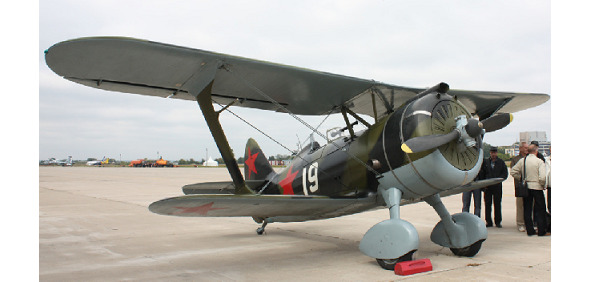
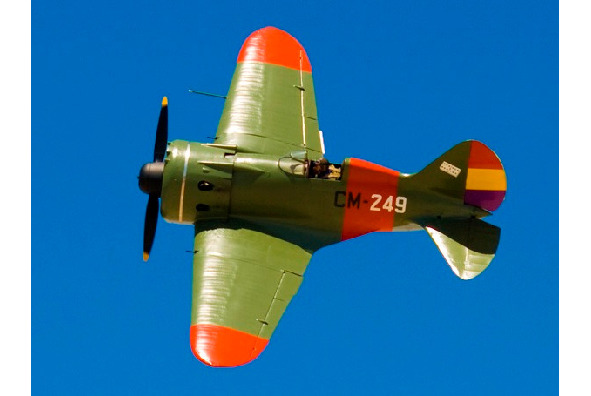
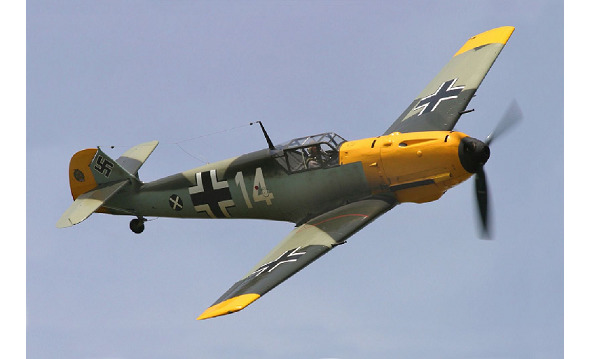
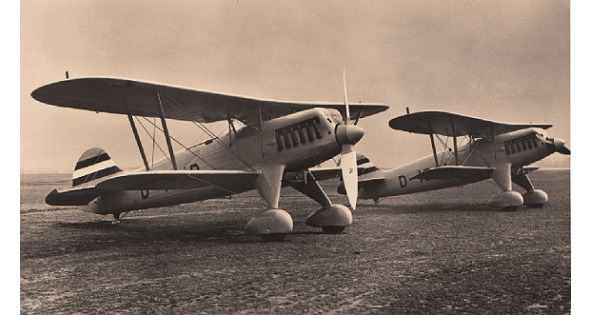
1. I-15 (Chato — “Pug-nosed”), a half-plane (the lower wing has a much smaller area) Polikarpova, four 7, 62 mm. machine gun, the speed of 370 km. h, the flight range is 750 km. On its basis, I-153 was created, a deep modernization of the I-15, “Seagull. Introduced retractable landing gear, appeared armored bump, the steel forms are more streamlined. Armament: four 7.62 mm. machine gun, 8 unguided missiles with 82 mm. shells, up to 200 kg. bombs. The speed is 410—430 km. h. The range of flight is 740 km. Put into operation by 1939 (after the war in Spain), quite successfully participated in the conflict at Halkin Gol. In the Finnish war proved to be mediocre. In the hot summer of 1941 it became finally clear that the development of the idea of biplanes, in addition to the short fuselage, of the wobbling “fatties” — Polikarpov’s big mistake. From 1939 to 1941, 3,427 aircraft were produced.
2. I-16 (nickname in the USSR — Ishak, Yastrebok, Spanish army, Franco — Rata — agile rapacious “Rat”, Republicans “Mosca” — “Fly”, in China — “Yanzi” — “The Swallow”). The first fighter is a low-grade aircraft in the USSR. Armament — four 7.62 mm. the ShKAS machine gun (the Shpitalniy and Komaritsky system, for the first time in the world, the rate of fire is 1,800 rounds per minute) or two 20 mm. guns and two 7.62 mm. machine gun. The speed at altitude is 450 km. h. The range of flight is 520 km. This is the maximum performance of an airplane with a single-row, star-shaped engine. The lantern of the cockpit can be closed completely, however, due to frequent seizures, the pilots keep it open (as can be seen in almost all the photographs). By 1942 inclusive (83 aircraft in the last year) produced 10 300 copies (not counting a few dozen, manufactured in Spain and China). Together with the “Seagull” brutal I-16 was the backbone of Soviet fighter aviation to the beginning of the Great Patriotic War. Led by an experienced pilot, he was not an easy prey, he tried to avoid maneuvering with him the aces of the Luftwaffe, saying that, they say; “You should not drive a rat into a corner.” However, the time I-16 passed.
3. Bf. (Me) — 109, Series B (Bruno), a fighter, was supplied to the Francoists in the second half of the Civil War. At that time had three 7.92 mm. machine gun. By the beginning of the Second World War Me-109 got four machine guns, or, in the other series, two machine guns plus 30 mm. a cannon with 60 shells. As an attack aircraft, he carried one 250 kg. the bomb. Speed — before modernization, during the war in Spain only 470 km. h, but by 1939, after replacing the engine (which became an unpleasant surprise, primarily for the British Air Force) — 570 km. h. In the mid-forties, its speed reached 620 km. h. The range of the flight is 480 km. In total, from 1937 to 1945, 34,000 Messerschmitts were produced.
4. Heinkel 51, the fighter of the Frankish first half of the war. Virtually had no chance against I-15. Armament — two machine guns 7,92 mm., Speed 310 km. h, flight range 550 km.
The rebels are changing the direction of the main attack and are crashing to the north of Spain — the Basque Country. April 26 German pilots destroy the city of Guernica. Strengthens his dictatorship Franco — his party “Spanish Phalanx” gets rid of internal opposition. At this time, the official Spanish government, which wants to achieve stability, completely purposely replaces a number of ministers. A single strong leader does not appear. The Republican army exhausts forces in fruitless frontal attacks of insignificant objects.
Organized according to the Stalinist patterns of the security service of the Republic, is being dealt with by prominent figures of the Marxist Party of Spain (Spanish POUM), is developing mass blind terror. Many Spanish Communists, as well as arrivals from all over the world interbrigadovtsy begin to get disappointed in their work, their morale is rapidly falling. The last successes Republicans achieve at the beginning of the offensive at the city of Brunet; (just west of the center of Spain), then they become entangled in contradictory orders, lose 25 thousand people against 10 thousand from the enemy, and together with them the original unity. On August 18, the republican units leave the front. 60,000 people are captured.
Italian submarines arrange a hunt for ships that supply goods still fighting in other theaters of military operations, Republicans. In early September, there is a sea battle; The Frankish flagship gets seriously damaged and departs from the convoy. Encouraged by this, insignificant in essence, success, the Republicans decide to hold a decisive offensive on land (Zaragoza, northeast of Spain). And again, their 80,000-strong group drains itself in unsuccessful attacks of secondary settlements, and then produces personnel personnel permutations that are also unnecessary to anyone. In early October, a new attempt is made to take Zaragoza. The main hope now is for 50 Soviet high-speed BT-5 tanks. Nationalists open floodgates of irrigation canals. Tanks bypass the appeared lakes, get bogged down in the mud, or far away from the accompanying infantry. The battle ends on October 17. Republicans lose 30,000 people killed and wounded, more than 30 tanks, francists — 20,000 people.
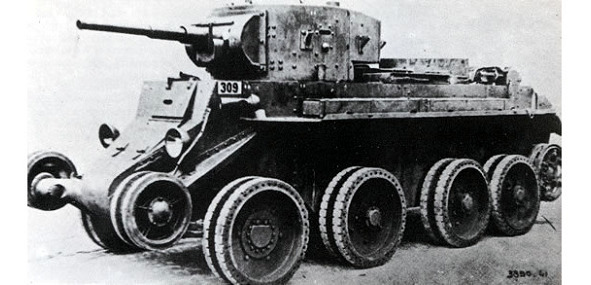
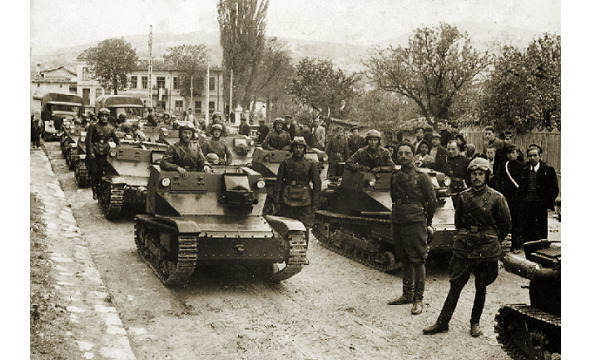
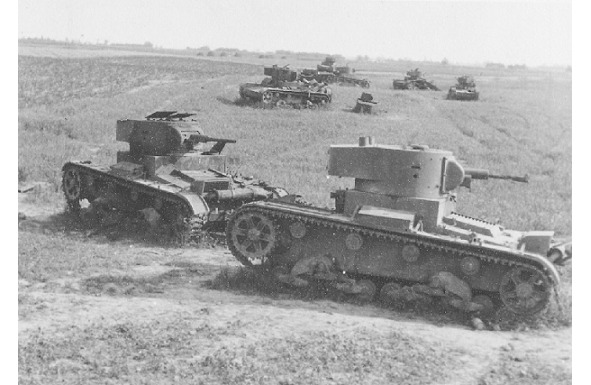
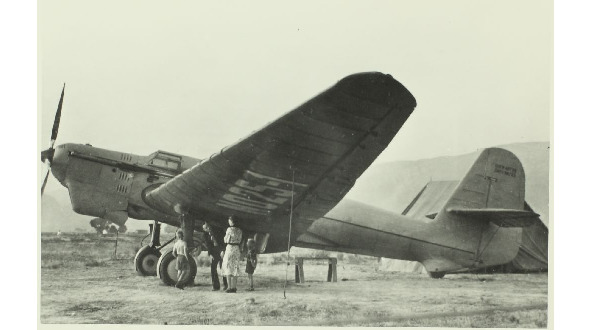
1. Wheel-caterpillar BT-5. Armament: 45 mm. gun, 115 shells, paired with a cannon 7.62 machine gun. Booking: the forehead, the side of the body 13 mm., The forehead, the side of the tower 13 mm. The speed along the highway is 52 km. h on caterpillars, 72 km. h on wheels. Crew of 3 people. Weight 11 tons. Power reserve on the highway on tracks 150 km, wheels — 200 km.; while the rubber rim wears out after 150 km. mileage. The specific power is 35 hp. (higher than that of modern tanks). Ground pressure 0, 65 kg. see with clad caterpillars, 5.65 kg. see on wheels. The number of vehicles produced from 1933 to 1934 — 1880. Most of the tanks lost in the first months of the war. Since 1942, the machines have basically been transferred to the rear, as training, a certain number of BT-5 has survived until 1945, participating, among other things, in defeating the Kwantung Army.
2. Waddress CV3 / 33 (Carro veloce CV-33), otherwise, by the name of the company — “Ansaldo”. Armament: two 6.5 mm. machine gun. Booking: the forehead of the case is 15 mm., The board is 9 mm, the forehead of the felling is 15 mm, the board is felling 9 mm. Crew 2 people. Weight 3,5 tons. The speed along the highway is 42 km. h. The power reserve is 150 km. Specific power 12 hp There are 1400 copies produced.
3. T-26. Photo of the consequences of the late (1941) tank battle for Dubno-Lutsk-Brody. The first serial classic Soviet tank, which took part in many battles, was put into operation after many problems with non-working engines and assembly of hulls (including unarmored steel). Difficulties were removed after manufacturers were allowed to introduce changes into the original scheme related to the peculiarity of domestic technology, changes. Armament: the first series — 37-mm gun, 7, 62 mm. a machine gun in two towers, then, in a single-tower version of 45 mm. gun, two 7, 62 machine guns. Booking bulletproof: the forehead, the side of the body 15 mm., The forehead, the side of the tower 15 mm. The crew is three people. Weight 8 tons. Speed along the highway is 30 km. h, the power reserve is 120 km. I received the approving comments of the veterans of the Great Patriotic War — “for our time a good tank, without it we would have to be very difficult.” Prototype — English (two towers) six-ton “Vickers”. Despite some difference in the reservation, he could hit his opponent, the German T-3 is almost as confident as he is his. But, the practical training of a Soviet tankman on a tank-boat is 6.5 hours (sometimes 300 meters, straight, and back to the hangar), German — 50—120 hours (practically, the armored car resource is burnt).
From 1931 to 1941, 11218 T-26 (half of the Soviet tank fleet at the beginning of the war) were assembled.
4. ANT-25. The aircraft, created in the USSR specifically for the establishment of world records (1933). The maximum flight duration is 75 hours, the range is 12 411 km., The speed is 240 km. h. Crew of three people. The military version is DB-1 (ANT-36), the cruising speed is 200 km. h, bomb load 1000 kg., combat radius of 2000 km. In this form, 24 cars were built, the air was rarely raised, and finally they were used as targets at the airfield.
June 18, 1937 ANT-25 with a crew from V. Chkalov, G. Baidukov, A. Belyakov takes off from the airfield Shchelkov (30 km from the capital) and makes a flight on the route Moscow-North Pole-United States of America. The landing takes place at Pearson Airfield, Vancouver, Washington (north-west of the USA), with a huge crowd of people. Later, the aircraft in disassembled form, on the ship gets back to the USSR, by our time finds shelter in the museum of Nizhny Novgorod. His double, who also flew to America, already under the control of the crew of M. Gromov, now resides in the museum of Chkalovsk (Schelkovo).
Due to his charisma V. Chkalov establishes a warm, trusting relationship with the Americans.
Returned back, became a world-class pilot, on the ship “Normandy”, by coincidence, with the legend of the screen Marlene Dietrich, a German and American actress. Chkalov gives her bouquets of flowers, provides signs of attention, etc., up to the point where a steady rumor of a novel arises.
One thing is clear: such things as “soft power”, records simply for the sake of records are often much more important for the security of the country than piles of expensive weapons and loud statements that “we will all beat you,” or: “Our friends — only the Army and Navy”. The ANT-25 voyage contributed a lot to the creation of a favorable atmosphere for solving the issue of large-scale Lend-Lease deliveries in the critical year 1941 — without which, perhaps, the USSR would have lost the war.
After this, the Nationalists deploy an offensive in the North of Spain (the province of Asturias). Francists — 40 000 people, 100 units of armored vehicles, 250 aircraft, 250 guns, Republicans — 40 000 fighters, several self-made tanks, 20 aircraft, 80 guns. Nationalists apply their technique and human resources skillfully, without unnecessary losses, and achieve success. Their losses — 10 000 killed, against 30 000 irrevocable human losses of the enemy. But most importantly — the Republicans do not work the economy. The Communist leveling is negatively perceived by both farmers and highly skilled workers, not to mention the nominal owners of enterprises. Peasants do not care who levies from them an increased rent for land — landlords or bearers of bright ideals. Working committees eat government loans, hold rallies on any occasion, do not produce weapons for the army, preferring to him any useful, quickly sold goods. The salary of a militia fighter is 10 pesetas (plus food). In 1937, food prices rose sharply, albeit unevenly in different regions of the country. Kilogram of beef in Madrid costs 5, 75 pesetas, a dozen eggs 3.75, but also for these prices set by the republican government, it is almost impossible to “get it”.
To top it off, the disappointed USSR and France recall their best military specialists. In the ranks of Republicans reign defeatism.
In the spring of 1938, a major offensive of the Francoists in the north-east of the country takes place. Italian air squadrons bomb Barcelona, the provisional capital of the Republic, capture part of the autonomous Catalonia, then turn to the south and cut the territory of the Republicans in half. In June, the nationalists are trying to develop success in the south, in Valencia, but run into a well-prepared line of defense, and bear significant losses.
At the end of November, Franco agrees that German companies will own 75% of the extractive industry capital in Spain and 100% in the colonies; after which Germany resumes large-scale military supplies. The republic also purchases equipment in the USSR on preferential terms, but France, after the Munich agreement, no longer wants to enter into a conflict with the Nazis, and stops military cargo on its border.
The Franco Armed Forces — 340,000 men, 300 tanks, 500 aircraft, are against the demoralized, badly armed 200,000-strong army of the Republic in Catalonia. Republicans do not accept the fight, they already have no bright ideals and interbrigades, along with 280 thousand civilian refugees they go to France.
After this, the nationalists without resistance occupy the remaining quarter of Spain. And, on April 1, dictator Franco declares the end of the civil war.
Irrevocable losses of the parties: francists (nationalists) — 130 000 people, Republicans — 320 000.
In addition, Spain loses 510 tons of gold reserves, settling in the USSR (declaring to the Spaniards much later that it was spent on them).
On the side of the Republicans fought about 2,000 volunteers — pilots, tankmen, sailors and military advisers. In battles and from various incidents, 189 people died, 56 received the title of Hero of the Soviet Union. General Pavlov (Pablo) experienced “cleansing”, defined the task of creating an exclusively caterpillar tank with a powerful large-caliber (simply — long-barreled) gun, but later, as the commander of the Western Front, swept between the broken armies and divisions, in 1941, was shot. Generals produced 22 pilots, 7 of them in the coming years were repressed. Unfortunately, their idea of replacing the unstable many cadets I-15 (and also the I-16 and the “Seagull”) with a new class fighter, was perceived as alarmism, and the proper response from the supreme leadership was not found immediately. In addition, the practical The experience of the confrontation of the Spanish pilots with German aircraft, as always in this system, is strictly classified, and there is no influence on the course of combat training in the Soviet Air Force.
Mikhail Svetlov (Sheinkman) in 1926 wrote the poems “Grenada”, put to music by composers of 20 countries, which became a hymn to the interbrigades, since 1956 — a cult Soviet, or rather folk song. The song is good, but, perhaps, in its minor mood, it programmed the fall of the Spanish Republic. The idea that the death of one fighter does not mean anything, the detachment of this loss simply will not notice, does not attach, if you think about it, a positive. Won not the states for which the little man should give everything, but those who are ready to sacrifice much for their citizen.
At the same time, the fascist march, the unofficial German hymn “Horst Wessel” (“Banners upwards”), clearly possessing some spiritual power, shows that, they say, then their troops notice the loss of fighters, and they are invisibly marching in the ranks of the surviving storm troopers. The Republican cry — “No pasarán!” — “They will not pass” is also, definitely, passive. Nationalists replace him with their less known, but more active: "¡Pasaremos!” — “We will pass.” In the end, four days before the end of the war, dictator Francisco Franco proclaims something that is very difficult to object: “Hemos pasado” — “We have passed.”
As part of the interbrigade fought, was, among other things, George Orwell (Arthur Blair). In his famous works “1984” and “Animal Farm”, he, not without bitterness, shows the degeneration of revolutionary principles, a totalitarian system based on universal fear, enslavement and denunciation.
Francis lives until 1975, after which the post of the head of the country is occupied by King Juan Carlos. The country passes to parliamentarism and constitutional monarchy.
…In March 1938 there was an anschluss, otherwise, annexation, annexation of Austria. Previously, the state apparatus of this country is full of officials receiving a second salary from Germany and pursuing the corresponding policy; At the decisive moment they give the command not to resist the invasion. As a result of the “blindfold war”, without losses, the Reich receives an additional 17%, territories and 6.7 million people, as well as 1.4 billion marks in currency and gold reserves. Austria becomes an administrative unit, called “Ostmark”.
After the “Munich Collusion” with one of the centers of power in Europe, Great Britain and Germany, Sudetes with all defensive structures, populated by 90% ethnic Germans, and then all of Czechoslovakia are transferred. Poland does not want to miss Soviet aircraft to help the Czech Republic. Resistance is rendered only by one garrison, with the commander of which the higher authorities did not manage to contact in time: twenty-four German soldiers were killed and wounded during a forty-minute battle. In addition to 3.5 million ethnic Germans, Germany receives Skoda factories and six hundred fully ready-to-use, fairly good 38 tanks at that time (25 mm armor, 37 mm cannon, suspension close to the Christie system). England returns to the occupied country (hence, already Germany), taken out before that for storage of gold reserves — 1.4 billion marks. Slovakia becomes an independent state after it transfers southern territories to Germany’s ally, Hungary, 87% inhabited by the Hungarians. At the height of the Sudeten crisis, Poland enters its troops in the Teshinsky region, which belongs to Czechoslovakia, where 80,000 Poles and 120,000 Czechs live.
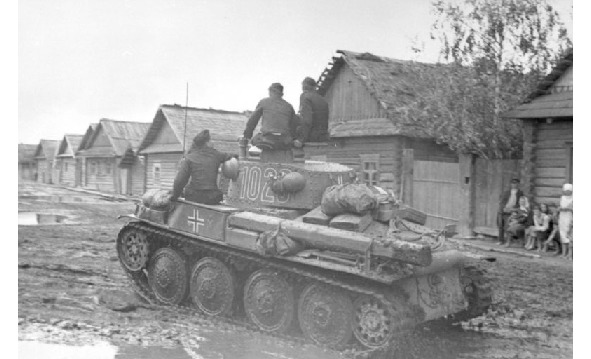
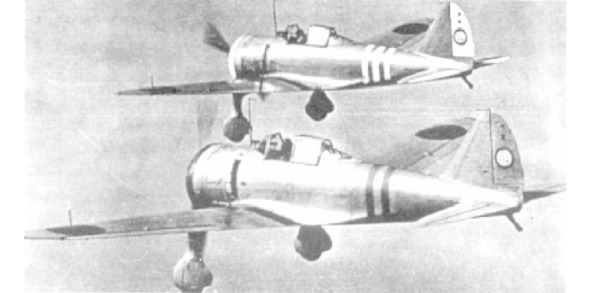
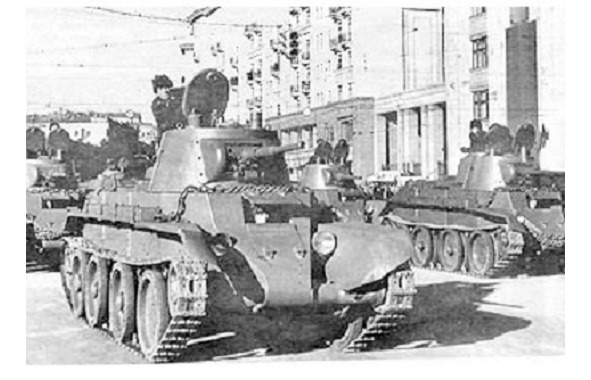
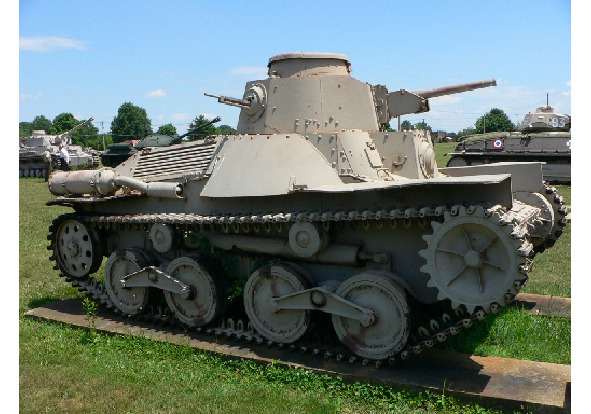
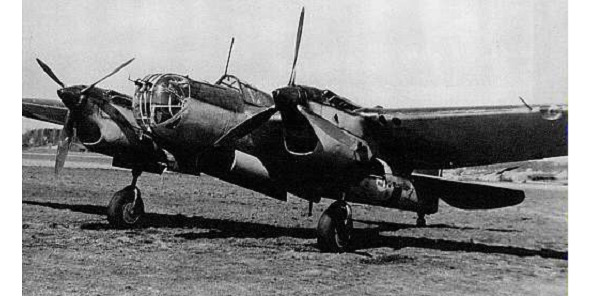
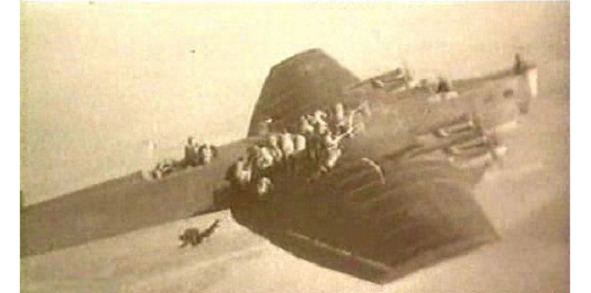
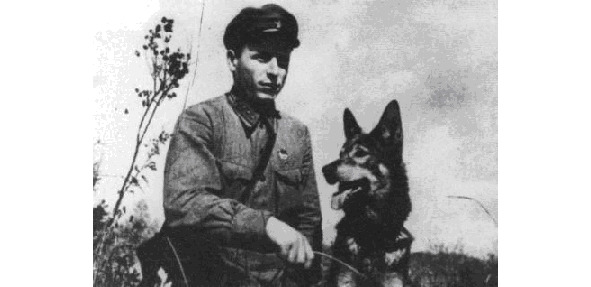
1. Quite a good Czech tank 38 (t). The “pigeon people” of Czechoslovakia never let them go against the Wehrmacht. In total, the enterprises of Skoda produced 1400 of them. The crew is 3—4 people, the forehead of the body is 25 mm high, the bottom is 12 mm., The hull is 15 mm., The forehead of the tower is 25 mm., The side of the tower is 15 mm. Weight 10 tons. Gun 37 mm, ammunition 72 shells, two machine guns, speed along the highway 48 km. h, cross-country 15 km. h, a power reserve of 230 kilometers.
2. Japanese fighter Ki-27 (in the USSR it was designated as I-97). Armament: two 7.7 mm. a machine gun with 500 cartridges per barrel. The speed of the earth is 395 km. h, at an altitude of 444 km. h. The range of flight is 627 km. From 1938 to 1942 produced 3,400 units.
3. BT-7. Armament: 45 mm. gun, 172 shells, one or two machine guns 7.62 (paired with a gun and aft). Booking: forehead housing 22 mm., Board 15 mm. (plus an outer layer of 4 mm.), the forehead, the side of the tower 15 mm. The speed is 72 km. h on wheels, 52 km. h on the tracks. Power reserve, 460 km. and 375 km. respectively, Crew 3 people. Weight 14 tons. Specific power 28 hp, ground pressure 0,85 kg. see (caterpillars). When driving on wheels, the front pair of rollers becomes controllable, the rear pair driving. Crawler — the steering wheel is removed, the drive from the transmission is sent to the “stars”, the control goes to the levers. The destruction of rubber bands — after about 100 km. mileage. The tank performed well in Khalkin-Gol, mediocrely — in the Winter War, differing in the worst side of the T-26 by its high fuel consumption, the noisiness, the complexity of the double drive. In the Great Patriotic War with varying success was used until 1942, after almost universally transferred to educational units. The last participation of BT-7 in military operations — the defeat of the Kwantung Army, 1945. From 1935 to 1940, 5330 vehicles were produced.
4. Ha-Guo, Type 95. Japanese light tank. Armament: 37 mm. gun, 75 shells, two 6.5 mm. machine gun. Booking: the forehead, the side of the body 12 mm., The forehead, the side of the tower 12 mm. speed on the highway 45 km. h, cross-country 25 km. h. Cruising range, respectively: 250 and 210 km. Crew of 3 people. Weight 7.5 tons. Specific power 16 hp, ground pressure 0,66 kg. See Manufactured 2300 machines.
5. ANT-40 (SB). High-speed (medium) front-line bomber, development of design bureau of AN Tupolev. Armament: four 7, 62 mm. machine gun ShKAS, 600 kg. bombs. Speed: maximum 450 km. h, cruising 375 km. h. The range is 2300 km. The crew is three people. Due to a fairly successful design, it was manufactured under license in pre-war Czechoslovakia: after annexation, all aircraft were placed at the disposal of the Reich and its satellites. Operated since 1936 in Spain, the Republican troops, where it was called “Katyusha” and (at the disposal of the francists) “Sofia”, also in the Khalkin-Gol, in the Winter, Great Patriotic War.
Most of the Security Council was destroyed in the first weeks of the Great Patriotic War; In addition, the lack of armor protection for the crew and vital units, and the lack of training of the flight crew, were reflected. Further, the ANT-40 was used as night bombers, to transport saboteurs to the rear of the enemy, as well as various kinds of cargo; ammunition, food, mail, etc. 6656 units were produced.
6. TB-3 (ANT-6). Soviet heavy bomber. Armament: from 4 to 8 7.62 mm. Degtyarev’s machine guns, the bomb load — normal 2000 kg of bombs, the maximum — 5000 kg. The speed of the land is 200 km. h, at an altitude of 180 km. h. The chassis are not retracted. The flight range is 3100 kilometers. The crew of 6—8 people. Successfully applied in the battles on Khalkin Gol, for their intended purpose, day and night, with the Soviet air force in the air, also for the evacuation of the wounded (15—20 people aboard), the delivery of goods. In the Winter War proved to be mediocre. It made up 25% of the Bomb Air Force by June 22, 1941, was based deep in the rear, so it almost did not suffer from Luftwaffe attacks. When daytime bombing targets carried heavy losses, but as a night bomber proved to be the best side. The Red Army was used up to the Battle of the Kursk Bulge. From 1932 to 1938, 818 vehicles were produced, completely ANT-6 was decommissioned in 1946.
7. One of the characteristic persons of the Stalin era — border guard Nikita Fedorovich Karatsupa, Hero of the Soviet Union. Birth — the village of Alekseevka, Zaporozhye region, Ukraine. Detained 338 violators of the state border. Personally, he destroyed “129 spies and saboteurs who did not lay down their arms.” In essence, this “right man” is a maniac killer of hundreds of unarmed Russian peasants who fled the Soviet regime and the GULAG abroad, possibly trying to explain the essence of their situation to the military detainee, but not receiving any response other than smirking or bullets.
Armed conflict between the USSR and Japan in the Khalkin-Gol
In the Japanese version, with Russian transcription, it sounds like “Nomon-khan jiken” — “The incident with Nomon Khan,” by the name of one of the local heights. Some historians consider fights at the river Halkin-Gol the Second Russian-Japanese war.
Since the twenties of last century Mongolia is a protectorate of the USSR and, nominally — a socialist country. Attacks on it are already considered a matter of the Soviet Union. Therefore, when in May 1939 militaristic Japan, unhappy with the demarcation of the border with the Mongolian People’s Republic, attacks Mongolian outposts near Lake Khasan, according to the Protocol on Mutual Assistance of March 12, 1936, the Red Army interferes.
Ground-based battles along the river Halkin Gol, considered by the Japanese as the “right” border with their puppet state on the territory of China (“above” Korea and more than three times), are conducted with varying success. The main events unfold in the air. Since May 22, for two days the Soviet fighter regiment is losing 22 I-15s, the Japanese — one. On an urgent basis, the pilots who showed up in Spain, as well as the newest I-16 and Chaika fighters, are called to the place of the conflict. From June 22 to June 28, the Japanese Air Force lost 90 aircraft, the Soviet Air Force lost 38 aircraft.
Since July 2, the Japanese ground group is moving into a large-scale offensive near Mount Bayan-Tsagan. In the battles participate up to 400 tanks and 300 aircraft from both sides at a time. Soviet troops quickly commanded by G. Zhukov. He manages to rectify the situation, although L. Beria sends the 1st rank commissioner L. Mehlis (a serial killer of the higher officers of the Red Army) to “check” the commander of the group of troops. The army commander’s psyche is stronger.
The Japanese side is losing 9,000 killed, almost all tanks and most of the artillery.
At the end of July, the intensity of military operations on the ground is declining. Again, fighting is in the air. Japan loses 67 aircraft, the USSR — 20. This is a prelude to a decisive blow by Soviet and Mongolian troops on August 20. The forces of the parties: the USSR-Mongolia — 30 thousand people, 500 tanks, 580 aircraft. Japan — 20 thousand fighters, 120 tanks, 450 aircraft. The army of the country of the Rising Sun is surrounded, crushed and destroyed. The day of the truce, on September 15, is crowned with an impressive air battle — 207 Soviet aircraft against 120 Japanese. Finally, “de jure”, the conflict ends in May 1942; the parties find a compromise on the basis of some geographic map found in the archives.
Losses of the parties: the USSR — irretrievable losses of 10 thousand people, 250 tanks, 210 aircraft. Japan and the Union of Manchukuo, according to the averaged data — 36 thousand people, 300 tanks, 400 aircraft.
The Soviet-Finnish War of 1939—1940
Ideas of Great Finland, uniting the peoples of the Finnish-Ugric group; Finns, Karelians, Estonians, from the Gulf of Bothnia to the Ural Mountains, are spreading with the separation of Finland proper from Russia in 1918. The Government of Suomi sends a petition to the warring Germany; conclude a Brest peace with the condition of joining Finland (an ally of the Austro-German Empire), East Karelia.
In the course of their own civil war, on April 29, 1918, the White Finns capture Vyborg, arrange the genocide of all people who do not speak Finnish (retired military, schoolboys in Russian uniforms, even Poles). Three thousand people die.
On May 15, 1918, the Finnish government declared war on Soviet Russia. Its troops occupy, in particular, the Russian, from the 16th century, Pechenga, rename the name of this village in “Petsamo”. Later, large deposits of nickel ore will be explored here, since 1935 their industrial development by Anglo-American corporations will begin.
The Finnish military partially block Petrograd, contributing to the first great famine in this city (according to averaged data, one hundred thousand people become victims of it, as well as “red” terror). At the rate of Mannerheim, a plan for “national uprisings” is being developed, Finnish instructors are being allocated to create centers of insurgency. However, the plans of the Field Marshal to conquer East Karelia, the Kola Peninsula, the offensive against Petrograd, Germany does not support. After the Vyborg tragedy, any joint operations to overthrow the Bolshevik government along with the Finns, the White Army refuses to conduct either.
By May 1920, parts of the Red Army were eliminating the puppet North-Karelian state. In October of the same year, Finland and the USSR signed the Tartous Peace Treaty, according to which Russia was losing part of its territories. However, in 1921 Helsinki unleashed the second Soviet-Finnish war, by forces of “forest partisans” committing acts of sabotage and killing of supporters of Soviet power. The fighting ends in March 1922, a document is signed to ensure the inviolability of the Soviet-Finnish border. About 30,000 people dissatisfied with the new order go to Finland and, up to the end of the 1920s, armed groups formed from them, make raids on Soviet territory.
Whatever it was, the mood in Finland does not seem friendly to the Soviet government. His proposal — the removal of the border from Leningrad at the expense of Finland, in exchange for twice the size of the areas of East Karelia. Rent of the island of Hanko to create a Soviet military base. Disarmament and demolition of the “Mannerheim Line” on the Karelian Isthmus. Finland rejects these conditions.
Military operations begin after the delivery of an ultimatum, on November 30, 1939, from shelling (ships of the Baltic Fleet) and the bombing of Helsinki. The Soviet Union is excluded from the League of Nations. European countries supply Suomi with weapons, including free of charge (350 aircraft, 500 guns) and volunteers. For two months the columns of Soviet troops advancing along the forest roads are being cut by Finnish skiers, surrounded and destroyed. This is no longer the Halkin Gol. In February, having saturated the troops with heavy artillery and tanks, having increased the norms of food allowance, the USSR is making progress in the breakthrough of the Mannerheim Line; On March 13, Soviet troops enter Vyborg. The world lies. Irrevocable, severe losses of the USSR — 130 000 people, 650 tanks, 640 aircraft; Finns — 26 000 people, with 450 000 refugees, 62 aircraft. From the Finnish captivity, 4,354 people return, and are being filtered by the NKGB GUGB. 450 of them are released, the rest receive from 5 to 8 years of camps.
This military operation could have a special meaning if the USSR kept Petsamo (Pechenga) with the reserves of nickel ore, much needed by Germany’s military industry. However, the international community, including, above all, the UK, is strongly opposed. The area Petsamo returns to the Finns, and they organize a large-scale supply of nickel to the Axis countries.
Pechenga will join the Russian Federation only in 1944.
Among the advantages in the combat training of troops, after such a harsh school, is the abolition of the institution of political commissars, the experience of breaking through long-term fortifications, the winter war as a whole, and the return to production of a submachine gun (PAP).
Cons, in addition to the hardest losses — the German government understands that, in principle, is able to achieve all-round success in the war against the “colossus on clay feet”.
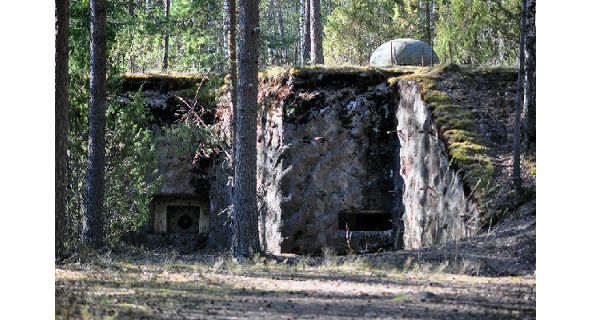
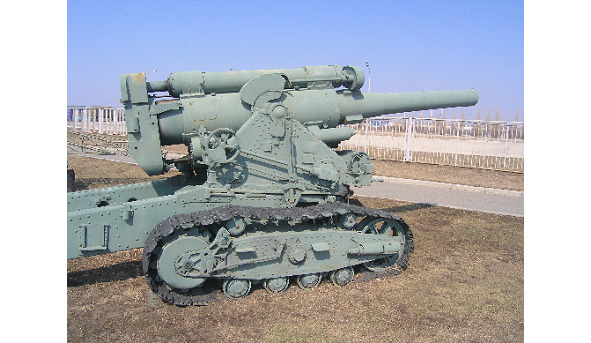
1. The Dot of the Mannerheim Line
2. Howitzer B-4, caliber of 203 millimeters. The main hero of the Finnish war. The nickname “Karelian Sculptor”, for the fact that this instrument turns Finnish dots into a kind of avant-garde statues. The parameters of Finnish DOTs are “million”: the length is about 40 meters, the thickness of the walls of reinforced concrete is 2 meters. The result of action B-4 — if not the penetration of the walls, then the psychological impact on the defenders of the DOTs. Many of them, after a long bombardment of the B-4 went crazy.
The entry of the Baltic republics into the USSR
In October 1940, the Soviet Union invites Estonia, Latvia and Lithuania, under a mutual assistance agreement, to deploy a military contingent of 25,000 troops on their territory to defend themselves against Hitlerite Germany. It is already clear that the Red Army is inclined to achieve its goals, regardless of any losses. Two weeks later, the governments of these countries are accused of collusion with Germany (which is partly true), repressions against foreigners (Poles, etc.) and are shifting. In the summer of 1940, following the results of nationwide voting, the republics are formed by communist governments and adopt declarations of entry into the Soviet Union; which are immediately approved by the Supreme Soviet of the USSR.
According to the documents of the NKVD of June 17, 1941, in Lithuania, 5,663 people, mostly secret police officers and “classical capitalists”, were subject to detention, 10,186 in Latvia, 5,624 and 9,547 in Latvia respectively, and 3,179 and 5,979 in Estonia.
President of Lithuania Antanas Smyatona wisely emigrates to Germany, then Switzerland and the United States. His Estonian counterpart Konstantin Päts is deported with his family to Siberia, receives 25 years of camps, since 1942 is kept in a prison psychiatric clinic, he died there in 1956. The head of Latvia, Karlis Ulmanis convinces the people that “friends have come”, actively cooperates with the new, pro-Soviet government, and in particular, publishes the “Law on the fight against wrecking”. Somewhat later he begins to understand the situation, asks the Kremlin for permission to travel to Switzerland, but eventually ends up in the NKVD camp near Krasnovodsk (Turkmenistan), where, in 1942, he dies.
The Second World War
Occupation of Poland
The territories of Poland, acquired by Germany at the expense of Germany under the Treaty of Versailles (West Prussia and part of Silesia), prevent the Reich from uniting with East Prussia, the “cradle of German militarism”, its sacral center. After negotiations on the creation of a land corridor, or at least the transit of goods through Poland without bureaucratic obstacles, September 1, 1939, the invasion begins simultaneously from Germany, Slovakia and Prussia. The Polish Air Force, having existed for three days, shoots down 130 Luftwaffe aircraft. On September 22, the bombing of Warsaw begins: 1,150 aircraft drop 4,500 tons of bombs, and on September 28 the Polish military command (the civil government takes refuge in France) signs an act of surrender.
On September 17, Soviet troops enter Poland to restore Western Belorussia and Western Ukraine, captured during the Russian-Polish war of 1920, to protect the Belarusians, Ukrainians and Jews who are there, respectively. The main idea: if Poland shows enough courage in confronting Hitler, it is actively assisted by France and England, the Wehrmacht meets a worthy rebuff, the status quo is observed on the part of the USSR. The obvious victory of the Germans, inclined, of course, to occupy the entire territory, means the entry into the game of the Red Army.
Part of Poland — the Vilna (Vilnius) region with 490 thousand inhabitants are transferred to Lithuania. Some territories pass to the satellite of Germany — Slovakia. Refused to accept Soviet citizenship 78,000 refugees (including Jews) from Germany occupied by Poland, are deported back, or receive 20 years of camps.
Losses of the parties: Poland — irretrievably 63 000 soldiers and officers in the battles with the Wehrmacht, 420 000 in German captivity, 230 000 in the USSR (ordinary and non-commissioned officers are dismissed to their homes, in 1942 most of them, in agreement with England, bypassing Iran, joins the British forces, forming the army of General Anders or Sikorsky), as well as 357 aircraft of different types. Germany — 15 000 killed, as well as 319 armored cars and 285 aircraft (as a result of air crashes, air defense and fighter operations). Soviet troops (RKKA) — 2,000 dead, 17 tanks and 10 aircraft. Poland: irretrievable losses in battles with the Red Army — 3000. Slovak army: 18 people.
So, in the war included England and France, who acted as the guarantor of Poland’s security, but the first six months of fighting on their fronts are almost not conducted. Flyers prefer to scatter leaflets (“confetti”), rather than bombs, over postings of the enemy, “We will not shoot at you if you do not shoot us”.
Hitler is interested not so much in the island of the foggy Albion, as in the English dominions. Even if you capture London, the government will move to the territory of one of the colonies, and the fight will continue indefinitely. Honorary peace with the Anglo-Saxons, the Nordic race, equal, according to the Fuhrer’s admission, to the Germans themselves, the delineation of the territories of influence is what Germany wants.
Benelux countries
Denmark and Norway. They are threatened with the capture of two centers of power: England and Germany. Denmark tends to the protectorate of Germany, the leaders of the country give the order not to resist the invasion; which took place in March 1940, and cost the life of thirteen Danish and two German soldiers. The Reich acquired a good supplier of agricultural products, a dozen of warships, as well as a 6,000-strong volunteer corps, who fought on the Eastern Front until his disbandment in 1943.
In April 1940, German warships attacked the British-assisted Norway and, by June 16 of the same year, seized it. The irrevocable human losses of the opponents are approximately equal: the Norwegians have 1,400 men, and also 60,000 prisoners, the British 1800, French and Polish 500, Germans about 4000. Allied forces are deprived of a total of 15 warships, including the aircraft carrier, Germany — 34 large and 10 small; these losses make the landing operation in the UK questionable. As a result of the submarine war, England is losing 485 ships, which is one third of the merchant fleet: Germany exchanges them for its 9 submarines.
On May 10, 1940, Belgium and Holland receive an ultimatum from the German command with reproaches in violation of neutrality — the unhindered passage of British aircraft over their territory, as well as the construction of long-term fortifications facing Germany. The note calls on Holland not to prevent the German troops entering the country, not as enemies. which, however, by this time already are on the land of the Netherlands. The government of the country of dams and cheese requests assistance from the British and French, their expeditionary corps is being put forward to establish contact with the Dutch.
German paratroopers seize the strategically important bridge from Rotterdam, which allows German tanks to block all large Dutch infantry units. Under the threat of bombardment of Rotterdam, a demand is demanded for full surrender of the state. The ultimatum is accepted, however, as a result of a mistake, or deliberate action of 60 Heinkel 111 bombers, 97 tons of bombs are dropped on the city. Holland surrenders five days after the outbreak of the war. Losses of the Dutch side: 2330 soldiers and officers, 70 aircraft, (68 Typhoons lost by the British Air Force), as well as 2,000 civilians, German — about 3,000 military, 275 aircraft.
The idea of an ambitious German officer, Erich von Manstein, is to attack the Anglo-French army, superior in number (4 million to 3 million Wehrmacht fighters), through the mountain (Belgian) Ardennes, from the north, through the forces of a few but unified tank units, the Fuhrer.
Invasion of France
The battle continues to unfold in neighboring Belgium, where the combined French, English, Belgian troops, and Wehrmacht forces converge on May 10—11. The first, truly grandiose operation of the Germans begins almost a failure: in the vicinity of Luxembourg, a motorized column of 41,000 units of equipment, a bumper to the bumper, stands in a 250-kilometer traffic jam. However, the confused allies and do not subject this light, desired goal to the bombing. Finally, 1,100 tanks break away from the concentration of infantry and break through the mountain serpentines to Belgium. Three days later, steel cars, with carriages filled with primitin, almost unimpededly cross the borders of France.
Of the battles of this period, one should note the first major tank battle at Ann, where 623 German (mainly Panzer 1—2) and 415 French (Renault, Gochkis, practically the same) tanks came together. The shortcomings of German armored vehicles were revealed — thin, 14.5 mm. armor and weak 20 mm. gun, against 45mm. armor and 37 mm. Guns tanks, Gochkis, whose crews, incidentally, consist of only two people. The tactics of the Panzerwaffe — beating with a single steel fist, with clear coordination over the radio and the clear purpose of the operation being conducted, shows superiority over the manner of the opponents to place the non-radiofected tanks in a shaky line. Belgium surrenders on May 28, its armed forces are getting out of the fight. Places of battle are moving to French Dunkirk. The movement of the German panzerwaffe is hampered by the rugged terrain; They also do not aspire to enter the zone of action of the large-caliber naval artillery of the British. Surrounded by Anglo-French troops, taking advantage of the bad weather, interferes with the actions of aviation, they are evacuated by the sea, leaving all their heavy equipment to the enemy. The idea to create here a springboard, a splinter in the body of fascist Continental Europe, is not considered.
Italy enters the war on the side of Germany; although its 300,000-strong army does not have much success, it completely demoralizes the French, and, on June 21, in the Compiegne Forest, where the Treaty of Versailles was signed 20 years ago, France’s surrender is announced.
Бесплатный фрагмент закончился.
Купите книгу, чтобы продолжить чтение.
